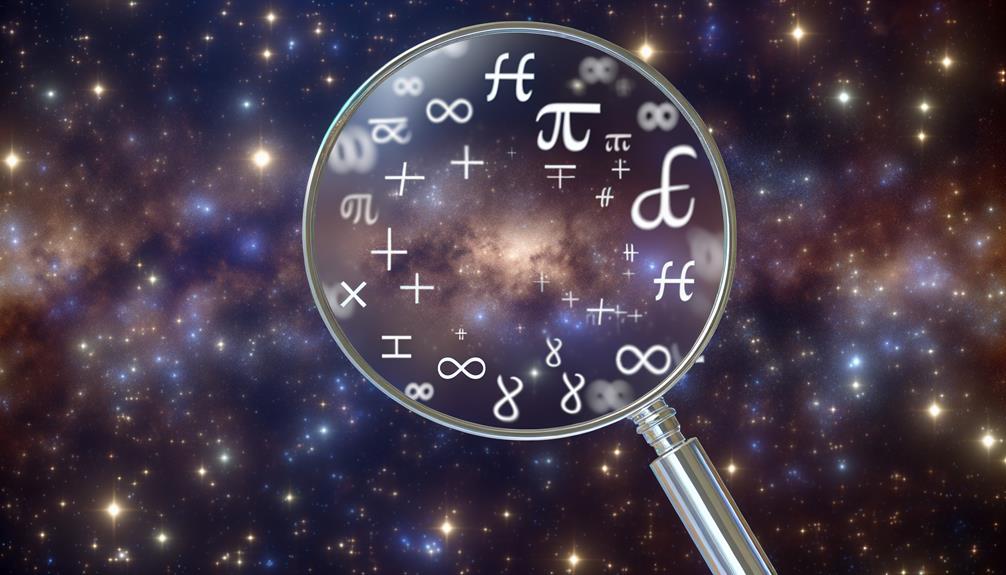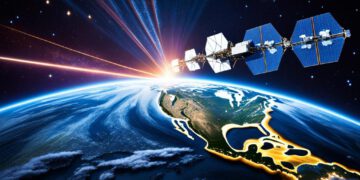So you think math’s just a necessary evil concocted by teachers to torture students, right? Well, let’s reconsider. Math science, or the application of mathematical concepts to scientific theories, is actually the language of the universe. It’s like the universe’s native tongue, and if you’ve ever wondered about the secrets it holds, you’ll need to converse in its language.
Intriguingly, math can help us understand everything from the patterns in a snowflake to the mysteries of quantum mechanics. Curious to know more? Let’s continue the conversation.
Understanding the concept of math science
Let’s dive right into understanding the concept of Math Science, cutting through any unnecessary jargon to get straight to the heart of the subject. Essentially, Math Science is the application of mathematical methods to scientific disciplines. It’s not just about crunching numbers or solving equations; it’s about utilizing mathematical principles to make sense of the world around us.
You see, every scientific field, from biology and chemistry to economics and social sciences, relies on mathematical concepts. Whether it’s calculating the rate of a chemical reaction or predicting population growth, math is the unsung hero behind the scenes. That’s why it’s often referred to as the ‘language of the universe’.
One of the key aspects of Math Science is the development of mathematical models. These models are like blueprints – they use mathematical equations to describe a system, be it a weather pattern, a stock market, or a galaxy. By solving these equations, we can predict how the system will behave in the future.
The connection between math and physics
Delving into the connection between math and physics, you’ll find that it’s not just strong, but intrinsic, with physics often being described as ‘applied mathematics’. It’s not an exaggeration to say that without math, physics wouldn’t exist. You see, math provides the tools physicists use to understand the universe.
Think of it this way: Physics is the lens that helps you understand the universe’s phenomena, while math is the language that describes these phenomena. When physicists explore concepts like motion, force, or energy, they’re using mathematical equations to do so. They’re quantifying their observations in a universal language that transcends culture and geography.
For example, Einstein’s theory of relativity, one of the cornerstones of modern physics, is expressed through complex mathematical equations. Without the language of mathematics, Einstein wouldn’t have been able to articulate his groundbreaking ideas. Likewise, quantum mechanics, the study of the tiniest particles in the universe, heavily relies on math.
Decoding mathematical patterns in nature
In the world around you, mathematical patterns aren’t just present, they’re essential, guiding the growth of plants, the formation of snowflakes, and even the movement of galaxies. These natural phenomena aren’t random, they’re rooted in precise mathematical formulas and patterns.
Consider the sunflower, its spirals follow the Fibonacci sequence, a series of numbers where each number is the sum of the two preceding ones. It’s not just for beauty, but for efficiency, allowing each seed to get the maximum amount of light and nutrients.
Or take a snowflake, its intricate design is based on hexagonal symmetry, a reflection of the molecular structure of water. It’s not just about aesthetics, it’s about physics.
Look up and you’ll see galaxies spinning in a spiral, a pattern described by the golden ratio, an irrational number that appears repeatedly in nature, art, and architecture. It’s not just about motion, it’s about the fundamental laws of the universe.
You’re living in a world of numbers, a beautiful, complex, and precise universe of patterns. So, the next time you see a sunflower, a snowflake, or a starry night, remember, you’re not just looking at nature, you’re decoding the mathematical language of the universe.
The role of math in quantum mechanics
From the spirals of a sunflower to the spin of galaxies, you’ve decoded the mathematical language of the universe, but now, we’re going deeper, right down to the atomic level where the rules of quantum mechanics take over.
Here, math becomes our primary tool to understand the peculiar behaviors of particles. Quantum mechanics challenges our everyday intuition, presenting a world where particles can be in two places at once, and cats can be both dead and alive – Schrödinger’s famous thought experiment.
You won’t see these phenomena in your daily life, but the math behind quantum mechanics makes it real. Wave functions, complex numbers, and matrices, they’re all part of this grand mathematical framework. Quantum mechanics isn’t just a theory; it’s a mathematical reality composed of abstract symbols and equations.
It’s through math that we’re able to predict the behavior of quantum systems and understand the fundamental nature of our universe. Without it, quantum mechanics would be a mystery. The equations might seem daunting at first, but take heart. You’re not just solving for x or y here; you’re uncovering the deepest secrets of the cosmos. So, dive in, because the language of quantum mechanics awaits your decryption.
Math science: Unveiling cosmic mysteries
As you unravel the mysteries of quantum mechanics, you’re primed to explore how math science opens up our understanding of the cosmos. You’ll marvel at how it helps us calculate the age of the universe, estimate the number of galaxies, and even predict the fate of the cosmos.
Math’s sophisticated language allows us to comprehend phenomena that are beyond human senses. You see, the cosmos isn’t just a vast expanse of stars and galaxies; it’s a complex system governed by mathematical laws. Einstein’s theory of relativity, for instance, is a mathematical model that predicts how gravity affects the structure of the universe. It’s this theory that’s helped us understand black holes, cosmic inflation, and the Big Bang.
Math science also plays a crucial role in space exploration. It’s instrumental in plotting spacecraft trajectories, determining optimal launch windows, and predicting potential hazards. Without math science, we wouldn’t have landed rovers on Mars or sent probes beyond our solar system.
Conclusion
So, you’ve journeyed through the universe of math science, linking math and physics, spotting patterns in nature, and delving into quantum mechanics.
It’s clear now: math isn’t just numbers and equations. It’s the language of the cosmos, revealing deep mysteries and profound truths about our world.
Keep exploring, keep questioning, and let math guide you on your scientific adventures. Remember, in the universe of math science, the possibilities are infinite.










